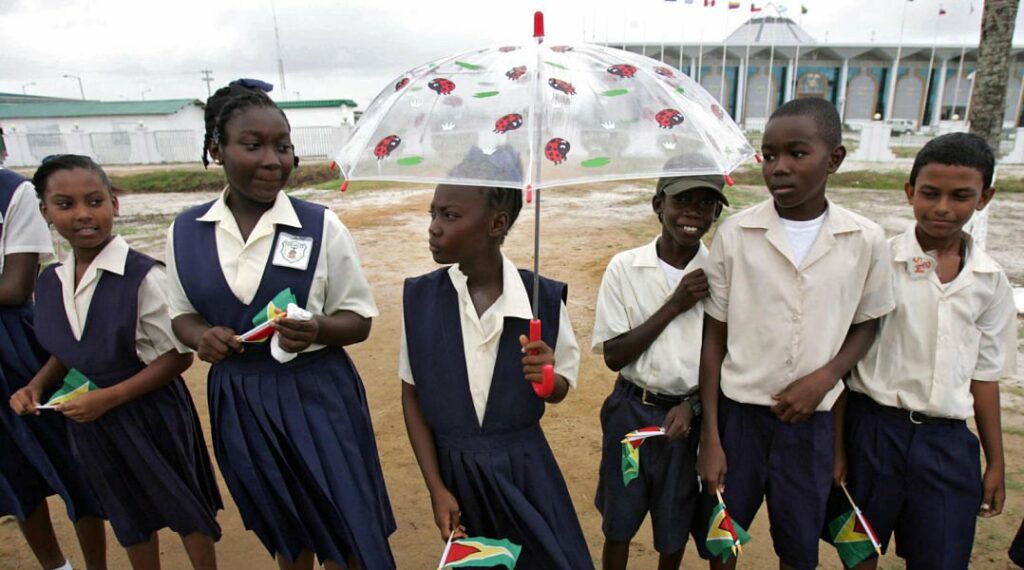GEORGETOWN, Guyana — Originally a Dutch colony in the 17th century and slightly smaller than Idaho, Guyana is the only English-speaking country in South America. Guyana is also the third-smallest country in South America, sharing both historical and cultural bonds with the Anglophone Caribbean.
There is a gap between rich and poor students in virtually every country in Latin America—over half of youth in rural areas do not complete nine years of school, and more than 40 percent of indigenous youth between the ages of 12 and 17 are not even in school. Guyana, though, has been the exception to these regional characteristics. Guyana has not only been attracting but also keeping more students in school now than at any other time in the history of the country.
According to Guyana’s Ministry of Education, “A far smaller proportion of students drop out here than the Caribbean average and a far smaller proportion drop out now than before.” The Ministry’s yearly digest reports that a smaller proportion of students are dropping out and takes pride in the fact that more boys are being retained in the formal education system. As a result, more young people in Guyana than ever before have the opportunity to be prepared to be successful and productive adults.
Furthermore, in the last 20 years, Guyana has reduced the proportion of children dropping out at the general secondary level by more than 75 percent. This is remarkable; while the drop out rate is decreasing, the enrollment rate has actually increased by more than 30,000.
“What is yet even more remarkable is that this increase in enrollment in secondary education is happening at a time when our school aged population is declining, as we believe the latest census will show,” Guyana’s Ministry of Education said in a statement. “Similar good news is true for the children who are not in general secondary schools but who are in the secondary departments of primary schools.”
Making it All Happen
The Ministry credits a number of various factors that have contributed to this remarkable progress. One example of this is that the education officials in Guyana has significantly reduced—and in some cases completely removed—the risk factors that could lead to the risky behaviors which the studies show lead to students dropping out.
According to World Bank studies, the country has reduced poverty by half—in a sense, this leads to parents empowering themselves and their children to attend school, feed them, clothe them and transport them. Without the imminent need for children to be at home and work early to assist their families financially, students have a better chance at long-term success and development.
The CIA World Factbook reports that Guyana’s school life expectancy totaled at 10 years—nine years for males, 11 years for females. Guyana’s child labor rates also totaled 16 percent (30,255) in 2006. Its education expenditure in 2012 was 3.2 percent of the GDP and in comparison to the rest of the world, it ranked 136th.
A second economic factor contributing to Guyana’s success is that because Guyana has a political commitment to development through education, that commitment is being matched by budgetary allocations of an average of 15 percent of the National Budget and approximately five percent of the country’s GDP has allowed The Ministry to make the improvements necessary.
Guyana also has committed themselves to expanding The Ministry’s Arts programs, changing the traditional delivery of education to allow for more inter alia and specialized interests, and more. It should be noted, however, that even with these efforts and many others, preventing students from dropping out cannot be solely dependent on government or ministry programs.
“It has to be a collective societal effort,” The Ministry continues, “there are identified factors in the various studies that would work to prevent students dropping out. In the IDB study they were called protective factors, and they include close emotional ties with at least one adult, a sense of safety and belonging to an educational institution, strong social skills, ability to solve problems, and a sense of purpose and independence.”
– Eastin Shipman
Sources: CIA World Factbook, Guyana Ministry of Education, Huffington Post
Photo: Huffington Post
Source link : https://www.borgenmagazine.com/guyana-sees-increase-enrollment/
Author :
Publish date : 2015-02-27 03:00:00
Copyright for syndicated content belongs to the linked Source.
